Pat Bertram's Blog, page 255
October 21, 2012
Grief: The Great Yearning
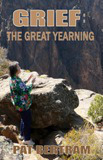 I never set out to write a book about grief, but I was so lost, so lonely, so sick with grief and bewildered by all I was experiencing, that the only way I could try to make sense of it was to put my feelings into words. Whether I was writing letters to my deceased life mate/soul mate or simply pouring out my feelings in a blog or a journal, writing helped me feel close to him, as if, once again, I was talking things over with him. The only problem was, I only heard my side of the story. He never told me how he felt about his dying and our separation. Did he feel as broken as I did? Did he feel amputated? Or was he simply glad to be shucked of his body, and perhaps even of me?
I never set out to write a book about grief, but I was so lost, so lonely, so sick with grief and bewildered by all I was experiencing, that the only way I could try to make sense of it was to put my feelings into words. Whether I was writing letters to my deceased life mate/soul mate or simply pouring out my feelings in a blog or a journal, writing helped me feel close to him, as if, once again, I was talking things over with him. The only problem was, I only heard my side of the story. He never told me how he felt about his dying and our separation. Did he feel as broken as I did? Did he feel amputated? Or was he simply glad to be shucked of his body, and perhaps even of me?
I wrote this letter to him exactly two years ago. It shows some of the collateral effects of grief, such as the questioning, the yearning, the struggle to come to terms with death and dying. Although I am going through a time of relative peace, what I wrote back then still holds true today.
Excerpt from Grief: The Great Yearning :
Dear J,
For the first time since you died, I almost forgot to advance your permanent calendar. I’m surprised I’ve remembered to do it all these months. I thought it would be a remembrance, but I don’t need anything to remind me of you — everything I see, say, do reminds me of you.
I’ve decided the only way to fill the hole you left in my life, to make sense of your absence, is to fill it with activities I would not have done if you were alive. There are not enough events in the whole world to fill the void, but I need to try, otherwise I’ll never manage to get through the next decades. I hope I don’t become one of those people who hold on to their pain because it’s all they have to make them feel alive, but it is all I have to connect to you. Well, I have memories and some of your things, but that’s not enough.
Would your death be easier to accept if you’d been happy? Is your unhappiness a reason for me to accept your death? What makes this so confusing is that your long dying, the accumulating weakness and pain made you unhappy, so how can I use that as a rationale for being okay with your dying?
I’m like a child, wanting to scream, “It’s unfair!” And it is, but that doesn’t change the fact that you’re dead.
Did I hold your hand when you died? I think I just stood there as you took your last breath, but I don’t remember. I don’t remember much of the last couple of years. It’s like I was in suspended animation, just waiting for you to die. What a terrible thing to say, but it was a terrible time to have lived through. But you didn’t live through it, did you? Well, you did live it, you just didn’t survive it.
I wonder if subconsciously I knew all this pain was waiting for me, and that’s why I closed myself off from the reality of your dying. I don’t like this, J. I don’t like it at all.
***
Pat Bertram is the author of the conspiracy novels Light Bringer, More Deaths Than One, A Spark of Heavenly Fire, and Daughter Am I. Bertram is also the author of Grief: The Great Yearning, “an exquisite book, wrenching to read, and at the same time full of profound truths.” Connect with Pat on Google+
Click here to find out more about Grief: The Great Yearning
Tagged: dealing with grief, death, effects of grief, Grief: The Great Yearning, letter to the dead, loss


October 20, 2012
Character as Fate and Fate as Character
 Heraclitus believed that a person’s character is their fate. Character — the sum total of a person’s traits — influences the choices a person makes, and the consequences of those choices ultimately become that person’s destiny. Or not. Much of life is luck, happenstance, and totally out of our control, though we tend to believe we have much more control over our lives than we really do. But that’s not an issue here because this is a writing discussion, and in our story worlds everything is under our control, and what our characters do determine their own fate.
Heraclitus believed that a person’s character is their fate. Character — the sum total of a person’s traits — influences the choices a person makes, and the consequences of those choices ultimately become that person’s destiny. Or not. Much of life is luck, happenstance, and totally out of our control, though we tend to believe we have much more control over our lives than we really do. But that’s not an issue here because this is a writing discussion, and in our story worlds everything is under our control, and what our characters do determine their own fate.
This is most obvious in a tragedy – a character comes to an unhappy end because of a flaw in his or her own character, though in today’s stories, because readers like a more optimistic ending, that fatal flaw is often balanced by a special strength. But character/fate works for other types of stories, such as a thriller where a character becomes obsessed with finding the truth, and that obsession leads to both the character’s fate and the end of the story.
For example, In Daughter Am I, a young woman is determined to find out the truth of who her grandparents were and why someone wanted them dead. That determination overrides her usual placidity and takes her on a journey that eventually leads her home again, changed forever. She really did find her destiny because of her character.
I wonder if the opposite is more true (if truth has degrees), that destiny is character. Does what happens to us, both the actions under our control and those beyond our control, determine who we are? Determine who our characters are? This was a theme I explored in More Deaths Than One. So much happened to my poor hero Bob that was not under his control, yet what was under his control — how he handled his fate — made him the man he became.
Any discussion about fate and writing would also have to include the question: does the writer’s fate affect the character’s fate? None of my books have totally happy endings. There is always a pinprick of unease in the background, but the book I am now contemplating — the story of a woman going through grief — is going to have even less of a happy ending. Perhaps because I know the ending of my own love story? Not my story, obviously, since I’m still here, but the story I shared with another. Except for my work in progress (the one that’s been stalled all these years) the stories I’m thinking about writing now all end up with the characters alone.
When I wrote the first draft of my novel More Deaths Than One (and the second draft and the third) I had the hero Bob meandering around his world trying to unravel his past all by himself, and it was boring. Did I say boring? It was moribund. The story went nowhere because there was no one for Bob to butt heads with.
In the fourth draft of More Deaths Than One, I gave Bob a love interest, a waitress he met at a coffee shop. (Hey, so it’s been done before. The poor guy spent eighteen years in Southeast Asia, and didn’t know anybody stateside. How else was he supposed to meet someone?) That’s when the story took off. He had someone to butt heads with, someone to ooh and aah over his achievements, someone to be horrified at what had been done to him.
From that, I learned the importance of writing scenes with more than one character. And yet here I am, once more falling into the black hole of writing characters alone because I can’t visualize them ending up with anyone.
Which leads me to my final question: could the fate of the character also influence the writer’s fate? If so, maybe I should decide where I want to go from here, and write my destiny. Or I could just wing it and see where destiny takes me and my characters.
***
Pat Bertram is the author of the conspiracy novels Light Bringer, More Deaths Than One, A Spark of Heavenly Fire, and Daughter Am I. Bertram is also the author of Grief: The Great Yearning, “an exquisite book, wrenching to read, and at the same time full of profound truths.” Connect with Pat on Google+
Tagged: character, character flaw, Daughter Am I, destiny, fate, Heraclitus, More Deaths Than One, tragedy


October 19, 2012
You Finished Writing Your Book. Now What?
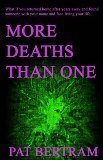 I recieved an email yesterday from a friend telling me she finished writing her book, and then she asked for advice about how to proceed in getting her book published. She said she is open to all venues — self-publishing, independent presses, agents and major publishers.
I recieved an email yesterday from a friend telling me she finished writing her book, and then she asked for advice about how to proceed in getting her book published. She said she is open to all venues — self-publishing, independent presses, agents and major publishers.
If you are in the same situation, the first thing you do is make sure you’ve edited the book, copyedited it, found people to read it to see if there are any obvious lacks, and made it the best book you possibly can.
What you do next depends on your goal. If you want to try to do it on your own without going through agents or publishers, there are plenty of self-publishing platforms to choose from such as Create Space, Amazon/Kindle, Lulu, Smashwords, Barnes & Noble/Nook. Do a bit of research to find the platform(s) that suits your needs. You don’t need an ISBN number for Amazon/Kindle or Barnes & Noble/Nook, though you do need one for most other venues.
If you want to try for a major publisher, research agents. You can find them at places like Preditors and Editors and Association of Authors’ Representatives. Look for agents who are interested in your genre. Once you have names, check out their websites to find submission requirements, and follow those requirements. If they say query letter only, don’t send samples of the manuscript. If they ask for the first three chapters, don’t send the whole manuscript.
If you decide to go with a small publisher, you can find a listing at Preditors and Editors and similar sites. Generally, you don’t need an agent for such publishers. Follow the same instructions as for agents, checking out their submission requirements and following them.
The query letter is your most important tool. Try to fit your letter to the particular agent or publisher. Always send to a particular person. Never use “Dear Sir” or “To Whom it May Concern.” Send a few letters out at a time (start with agents and publishers who will accept email submissions to save time and money). By doing only a few at a time, you can rewrite your query letter and synopsis as you get rejections. (Keep in mind a rejection at this stage only means they rejected your letter, not your manuscript.) The better your letter is, the better chance you have of getting someone interested in looking at your manuscript.
Click here to find out How to Write a Query Letter.
This is the query letter I wrote for More Deaths Than One. It got me an agent, but the agent couldn’t find a publisher. I found a publisher on my own when the agent’s contract expired.
Dear (Name):
The painting is of a pond with no ripples, surrounded by forest. Very serene. As Bob studies the painting, however, disquiet begins to creep over him, and he can almost see the monstrous thing that lives in the slime deep down at the bottom of the pool.
“I was trying to paint what’s in here,” he says, tapping his chest with a fist. Then he gestures to the painting. “I don’t know how that happened.”
When Bob Stark returns to Denver after almost two decades in Southeast Asia, he finds that, like his painting, nothing is as it seems. Not only does the city of his birth seem alien; the mother he buried years before has died again. Even worse, two men who appear to be government agents are hunting him for no reason that he can fathom.
Set in 1988, this novel, More Deaths Than One, explores what it is that makes us who we are. Is it our memories? Our experiences? Our natures?
Enclosed please find a synopsis and the first three chapters of this suspense novel. The finished manuscript of 80,000 words is available upon request.
Sincerely,
Pat Bertram
***
Pat Bertram is the author of the conspiracy novels Light Bringer, More Deaths Than One, A Spark of Heavenly Fire, and Daughter Am I. Bertram is also the author of Grief: The Great Yearning, “an exquisite book, wrenching to read, and at the same time full of profound truths.” Connect with Pat on Google+
Tagged: how to get published, How to Write a Query Letter, looking for a publisher, looking for an agent, Query letter, self-publishing, what to do when you finish writing a book


October 18, 2012
Does One Have to be a Coffee Drinker to be a Writer?
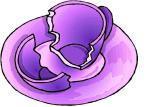 I do author interviews on my Pat Bertram Introduces . . . blog, I have a constant feed of authors’ status updates in my Facebook feed, and I participate in several online discussion groups for writers. And always, one word seems to come to the fore: coffee. Coffee seems to be part of the writing ritual, and many authors claim to find inspiration in a cup of coffee. Hmmm. I don’t drink coffee. Am I missing a vital part of the writing process?
I do author interviews on my Pat Bertram Introduces . . . blog, I have a constant feed of authors’ status updates in my Facebook feed, and I participate in several online discussion groups for writers. And always, one word seems to come to the fore: coffee. Coffee seems to be part of the writing ritual, and many authors claim to find inspiration in a cup of coffee. Hmmm. I don’t drink coffee. Am I missing a vital part of the writing process?
Here are some responses to the question of what writers drink while writing. The comments are taken from interviews posted at Pat Bertram Introduces . . .
From an interview with: J. Conrad Guest, author of Backstop and One Hot January
My morning sessions start with a pot of coffee and a trip to my humidor to select a cigar.
From an interview with: Coco Ihle, author of She Had to Know
I have a wonderful 16 oz. thermos mug that keeps my coffee hot, so I don’t have to get up so often for a refill. My right hand seems to be permanently crooked into the mug holding position.
From an interview with: P.I. Barrington, Author of Isadora DayStar
Coffee and Diet Coke are my working poisons. If I could get them both via an IV drip I would, lol!
From an interview with: John Paul Allen, Author of “Monkey Love”
Lots of coffee — two or three pots are a must.
From an interview with: Millicent Borges Accardi, Author of Injuring Eternity
I typically drink Peet’s coffee when I am writing or at my computer.
From an interview with: T. C. Isbell, Author of “Southern Cross”
Coffee, I drink vast mounts of coffee while I work.
From an interview with: Dr. Dorothy McCoy, Author of “The Manipulative Man”
I fix a cup of superb, fresh ground coffee (one should not skimp on coffee).
From an interview with: Jetta Stone, Author of “Silver Moon”
Chocolate and a cup of steaming strong brewed coffee.
From an interview with: Tom Rizzo, Author of “Last Stand At Bitter Creek”
Coffee. Is there any other?
From an interview with: Steven Hart, Author of “We All Fall Down”
Coffee. Oh yes — coffee.
See what I mean? Coffee. What about you? Do you have a favorite beverage that you drink while writing?
(If you’d like me to interview you, please check out my author questionnaire http://patbertram.wordpress.com/author-questionnaire/ and follow the instruction.)
***
Pat Bertram is the author of the conspiracy novels Light Bringer, More Deaths Than One, A Spark of Heavenly Fire, and Daughter Am I. Bertram is also the author of Grief: The Great Yearning, “an exquisite book, wrenching to read, and at the same time full of profound truths.” Connect with Pat on Google+
Tagged: author interviews, coffee, cofffee drinker, Pat Bertram Introduces, writing and coffee


October 17, 2012
Is it Your Business What Others Think of You?
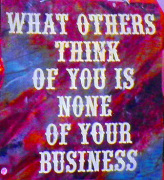 Occasionally I see a saying that seems to bring a moment of enlightenment, but the more I see it, the murkier its truth becomes. And so it is with this little gem: What others think of you is none of your business.
Occasionally I see a saying that seems to bring a moment of enlightenment, but the more I see it, the murkier its truth becomes. And so it is with this little gem: What others think of you is none of your business.
To a certain extent, the saying is true. You can’t live your live trying to figure out what others think of you and then work your life around their opinions. You have to consider what you think of you and live your life accordingly. This also works in reverse — what you think of someone is none of their business. So often, we feel the need to tell others what we think of them — simply to help them, of course — but if what we think of them is none of their business, we might as well keep our opinions to ourselves. (And perhaps save a friendship in the process.)
But . . . (by now, I’m sure you’ve read enough of my blog to know there is always a but somewhere in my posts.)
What a child thinks of his parents is often a key to his emotional health, so what the child thinks of his parents is definitely the parents’ business. If the child is overly attached to his parents or is angry at them for no apparent reason, the child could be having emotional problems. On the other hand, if the child is embarrassed by his parents (beyond normal bounds) or if the child finds it hard to be around them for some reason, maybe the parents are the ones with the problem.
If you are in a romantic relationship, a marriage, or some other long-term coupling, what your loved one thinks of you is definitely your business. If you think yours is a love match and the other thinks it’s a lust match, you need to know that so you can make informed decisions about your future. If your husband no longer loves you and has developed a roving eye, you certainly need to know how he feels about you so you take appropriate actions, such as getting couple’s therapy. (Unless, of course, you prefer not knowing.) If you’re in a relationship and are ready “for the next level” (whatever that is), and your partner in the relationship wants only your money, you need to know the truth before things go to far.
And of course, if your neighbor hates you enough to want to kill you, that most certainly is your business.
There must be many other examples where this particular saying doesn’t pertain, but you get the point: sometimes a clever message is simply clever and not a great truth.
***
Pat Bertram is the author of the conspiracy novels Light Bringer, More Deaths Than One, A Spark of Heavenly Fire, and Daughter Am I. Bertram is also the author of Grief: The Great Yearning, “an exquisite book, wrenching to read, and at the same time full of profound truths.” Connect with Pat on Google+
Tagged: enlightenment, none of your business, what others think of you, what you think of others, what you think of you

October 16, 2012
Grief Rant
 I still have some anger in me, apparently. I occasionally “flame out” as one friend said when I disagreed with an email that friend sent. I am regaining my equilibrium, though, able to get through my days mostly even tempered, but one thing continues to raise my ire: when people assume all grief is the same, and especially when they assume they understand the grief of someone who lost a soul mate because they lost a beloved pet. Such a comment set me off tonight, and when my reply ended up being longer than some of my blog posts, I decided to publish the comment here rather than get in a grief match (“my grief is worse than your grief”) because, honestly, all loss is devastating, especially when it happens to you.
I still have some anger in me, apparently. I occasionally “flame out” as one friend said when I disagreed with an email that friend sent. I am regaining my equilibrium, though, able to get through my days mostly even tempered, but one thing continues to raise my ire: when people assume all grief is the same, and especially when they assume they understand the grief of someone who lost a soul mate because they lost a beloved pet. Such a comment set me off tonight, and when my reply ended up being longer than some of my blog posts, I decided to publish the comment here rather than get in a grief match (“my grief is worse than your grief”) because, honestly, all loss is devastating, especially when it happens to you.
And yet . . . the death of a pet, no matter how beloved, is not the same as losing a soul mate. Nor is the trauma of losing a brother or a mother the same as losing a long-time spouse. The only thing that comes close is losing a child. (My younger brother’s death hastened my mother’s death. She died a year after he did.)
I understand there are all kinds of grief, and I know they all have to be honored. Grief of any kind that is not processed can cause additional problems. (Or not. Some people seem to do quite well walling off their grief.)
My concern has always been for those who have to deal with the death of a spouse, whether a life mate or a soul mate because that sort of all-encompassing grief is more than most people can comprehend. I thought I understood grief — after all, I grieved the deaths of my brother and my mother — but until the death of my life mate/soul mate, I never even knew such profound grief existed. During the past two and a half years, I have met dozens, maybe hundreds of women who have lost their mates, and they all mentioned the same thing — they had to hide their grief because no one understood. That is unconscionable. (I didn’t have this problem. I’m a quasi hermit, so no one was around to see me mourning.)
The truth is, it’s the very prevalence of grief that makes people uncomfortable with the profound grief of someone who lost a soul mate. People figure they got over their grief, whatever or whoever it was for, so you should, too. The trouble with losing your mate is that your grief is not just emotional, but also physical. In addition to the unimaginable agony of loss, you have to deal with shock, a blizzard of hormonal reactions, changes in brain chemistry, an incredible level of stress (losing a mate is considered the most stressful thing a person ever has to deal with; many people end up being treated for PTSD). Your death rate climbs 25% for all causes.
Added to that are all the horrendous “death” chores you have to deal with such as planning a funeral and filling out all the official and financial paperwork involved in “removing” someone from the world. As your emotions begin to stabilize, you have other griefs to deal with since a soul mate is more than a spouse — he’s also a best friend, companion, sometimes even a business partner, and all those losses have to be processed. You also grieve for the loss of yourself, at least your coupled self. And then you have to deal with the restructuring of your life. Your dreams are gone as are your plans for the future so you need to find new reasons to live. Sometimes you have to leave your home. It takes years to sort out all the losses so you can process them and begin again.
I don’t mean to belittle anyone’s grief. But, as I explained in my post, Why I Write About My Grief, people who have lost a mate deserve a lot more consideration and understanding from their family and friends than the assumption that their loss is comparable to the loss of a beloved pet.
***
Pat Bertram is the author of the conspiracy novels Light Bringer, More Deaths Than One, A Spark of Heavenly Fire, and Daughter Am I. Bertram is also the author of Grief: The Great Yearning, “an exquisite book, wrenching to read, and at the same time full of profound truths.” Connect with Pat on Google+
Tagged: all grief is not the same, dealing with grief, death of a spouse, grief and loss, grief and stress, loss of a pet, whose grief is worst

October 15, 2012
Opening Myself to the Power of the Universe
I’ve never had an interest in yoga, though as it turns out, several of my morning stretching exercises are yoga poses. But now I’m hooked and mostly because of a single pose called Warrior. (I can’t even pronounce the Sanskrit name: Virabhadrasana.)
The pose seems to open me up to the universe and myself, makes me feel strong and potentially invincible, as if I’m tapping into hidden sources of power. I have no idea why the pose has this effect on me since the others in the class don’t have the same affinity for the pose that I do. All I know is the effect it has on me. I feel the power even more when I am out in the desert, alone with the sun, facing the mountains.
“Warrior 1” is shown here, with the arms extended over head. In “Warrior 2″, the right leg is foremost, the right arm is extended straight out in front and the left arm is stretched out behind in line with the legs, and the head pointing toward the right thumbs (You can find images of the pose by Googling “Warrior 2.”) You also do the pose in reverse, with the left leg foremost.
It will be interesting to find out what happens over the course of the months by doing this exercise. If the effect isn’t an illusion, and I’m really gathering power, then watch out! Who knows what I will become.
Tagged: feeling powerful, gathering power, the power of the universe, Warrior 1, Warrior 2, yoga

October 14, 2012
You Are Invited to Participate in a Blog Chain — “The Next Big Thing”
 I accepted an invitation to participate in a blog chain called “The Next Big Thing,” and since I don’t like to artbitrarily tag people, I’m extending an invitation to anyone who would lke to participate.
I accepted an invitation to participate in a blog chain called “The Next Big Thing,” and since I don’t like to artbitrarily tag people, I’m extending an invitation to anyone who would lke to participate.
The idea is to answer 10 questions about your WIP or a new project and in turn “tag” 5 other writers who will write posts on their blogs.
My post will be up on this blog during the week of 11/26 – 12/02, so yours (which I’d link to) would be any time the following week, 12/03 – 12/09. You’d then invite 5 authors to do the same thing you’re doing, & link to their blogs, as well as back to mine (as the one who invited you to partake). Obviously, I’ll be linking to your blogs rather than the specific posts since those won’t be up yet when I post mine.
In step form:
1. I write a blog answering the interview questions, and put links to your blog (and 4 others whom I invite). I also credit the blogger who invited me.
2. You write a blog answering those questions and put links to 5 others of your choice, as well as linking back to my blog. (All our blogs will follow the same format, so when mine is posted, you will be able to see how to format yours.)
You are now finished!
3. The 5 authors you invite answer the questions; each one puts that blog up the week after yours goes up (yours would post the week of 12/03 – 12/09; theirs go up the following week) and each one credits you as the inviter & puts a link to your blog.
4. They in turn, tag 5 other authors, & the cycle continues.
So, you’re done once you put your own blog up and list your 5 authors.
The idea is that each person gets shouted out a) as an invited author, and then b) 5 times as the one who invited.
Would you be interested in taking part? The questions are below.
Ten Interview Questions for the Next Big Thing:
What is your working title of your book?
Where did the idea come from for the book?
What genre does your book fall under?
Which actors would you choose to play your characters in a movie rendition?
What is the one-sentence synopsis of your book?
Will your book be self-published or represented by an agency?
How long did it take you to write the first draft of your manuscript?
What other books would you compare this story to within your genre?
Who or what inspired you to write this book?
What else about your book might pique the reader’s interest?
Leave a comment with your blog address if you’d like to take part in this blog chain. Nothing dire will happen to you if you don’t participate, of course, since this isn’t anything like a chain letter, but saying yes might get you a few new readers.
***
Pat Bertram is the author of the conspiracy novels Light Bringer, More Deaths Than One, A Spark of Heavenly Fire, and Daughter Am I. Bertram is also the author of Grief: The Great Yearning, “an exquisite book, wrenching to read, and at the same time full of profound truths.” Connect with Pat on Google+
Tagged: Blog Chain, blog promotion, Interview Questions, The Next Big Thing

October 13, 2012
Why Are Periods and Commas Put Inside Quotation Marks?
 Why are periods and commas put inside quotation marks and exclamation points and question marks put outside the quotation marks?
Why are periods and commas put inside quotation marks and exclamation points and question marks put outside the quotation marks?
I’d never pondered this question until recently — I just followed the punctuation rule — but now the rule so often seems illogical.
For example: Did you read my short story “The Willow”? This is the logical placement of the end punctuation, right? The title of the short story (which is published in the Change is in the Wind anthology, by the way) has no period in the title, but if I rephrase the sentence to make it a statement, it seems as if there is a period after the title. I hope you read my short story “The Willow.”
Apparently, this rule of placing periods and commas inside quotation marks is only practiced in the USA. In Britain, they do things differently, but since my books and blogs are mostly read and rated by those in the USA, that’s the rule I have to follow, even if it’s (sometimes) against my inclination.
It is an outdated rule. Apparently, when type was set by hand for printing, if the period and comma were placed outside the quotation mark, the delicate pieces were in danger of getting bent out of shape, knocked out of place, or broken off, and so were placed inside the quotation marks for protection. With electronic type, there is no danger of punctuation marks wandering astray, but still the rule lingers.
No one seems to care one way or another about this anachronistic placement, but since it’s one of those rules so many people don’t seem to remember, I have a hunch period and comma placement will become a non-issue, with everyone simply doing as they please.
***
Pat Bertram is the author of the conspiracy novels Light Bringer, More Deaths Than One, A Spark of Heavenly Fire, and Daughter Am I. Bertram is also the author of Grief: The Great Yearning, “an exquisite book, wrenching to read, and at the same time full of profound truths.” Connect with Pat on Google+
Tagged: commas, periods, punctuation, quotation marks, Why Are Periods and Commas Put Inside Quotation Marks

October 12, 2012
Introducing Mike Pettit, Author Extraordinaire
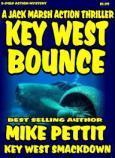 One of the most fascinating people I have met online is Mike Pettit. His nightly “Goodnight America” is worth waiting for. His books covers are wonderfully nostalgic, reminding us of an earlier age of publishing. His comments are a bit too amusing to be truthful (except for his political comments, which are a bit too truthful to be amusing.) I’ve wanted to interview Mike for a long time for my interview blog, and he has finally agreed to answer some of my questions. Below is an excerpt from the interview, outlining Mike’s Three P Plan for selling books. (You can find the entire interview here: Mike Pettit, Bestselling Author of “The Key West Smackdown.” I hope you stop by to read the interview. You won’t be sorry you did.)
One of the most fascinating people I have met online is Mike Pettit. His nightly “Goodnight America” is worth waiting for. His books covers are wonderfully nostalgic, reminding us of an earlier age of publishing. His comments are a bit too amusing to be truthful (except for his political comments, which are a bit too truthful to be amusing.) I’ve wanted to interview Mike for a long time for my interview blog, and he has finally agreed to answer some of my questions. Below is an excerpt from the interview, outlining Mike’s Three P Plan for selling books. (You can find the entire interview here: Mike Pettit, Bestselling Author of “The Key West Smackdown.” I hope you stop by to read the interview. You won’t be sorry you did.)
PB. Do you ever feel like you are lost among the thousands of other Kindle authors?
MP. Absolutely not. I treat my writing as a business. Here are my steps to selling books. I call it the Three P Plan (I should publish this and make a fortune…oh wait, that’s been done).
PRODUCT: Write the best book you can, edit the best you can, have the best cover you can.
I consider myself a good storyteller, but I am not a five star writer. If stars were grade averages I would be a C+ or B- writer, and that‘s OK. So, be realistic with your expectations. Average authors sell books, trust me.
I use the Flisch-Kinkaid comprehension scoring method to determine my writing / reader comprehension. I write to a reading audience at the 8th to 10th grade level of comprehension. This by the way is what the F-K scoring states as the reading level of most fiction-reading adults in America today. As a comparison, Obama’s State of the Union address was written to the 7th grade level of comprehension, The Wall Street Journal just dropped their Comprehension level from 12th grade to 10th grade level.
It might make you feel better knowing this the next time someone writes a bad review on your baby and gives it a two-star D rating. This does not mean you did badly. It means the reader should have read something on a higher comprehension level. That’s why I say you must know your audience …and write to them.
PRICING: To thine own self be true. You must price your book at a reasonable price. The big guys that work for the Big Six publishing houses command $25.00 and up per pop. That’s nuts, but they get it.
E publishing is growing with more and more readers coming over to the light, soon the big publishing houses and agents will be begging for us little guys to sign up with them.
My strategy is that I write and price my books to fit my audience. I am not greedy nor am I swollen headed. I know that I am a C+ writer and what I have to offer is a damn good quick read for a couple of bucks. The reader is happy with the read and the price and he’ll come back for more. You’ll make your money on volume sales
PUBLIC RELATIONS / MARKETING: Never stop pushing your book. I sell on Kindle and Nook. I use every social network platform I can find. I have Face Book, Twitter, Google +, a large FB and Twitter friend base. Look for “Friends that fit your target audience and talk to them…constantly.
This is just me, but I don’t spend a lot of time talking with other authors. If you aren’t talking to your customers, someone else is.
***
Mike Pettit’s newest book is The Key West Bounce. Check out Mike on Amazon, Facebook, and his action/mystery blog.
Tagged: Key West Action series, Mike Pettit, Sam Nash Hard Boiled Mysteries, selling books, The Key West Smackdown





